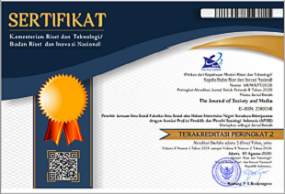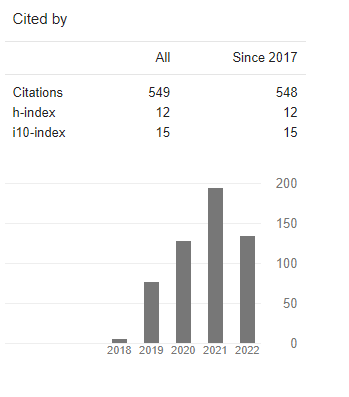Male Perception of Female Participation and VAW on the Virtual Learning App – “Hallo”
DOI:
https://doi.org/10.26740/jsm.v6n2.p365-391Keywords:
male perception, online learning platform, patriarchyAbstract
This study explored men's perception of women's participation and VAW (Violence against women) on an online learning platform called "Hallo." Based on the analysis of in-depth interviewed data collected from male users of the application, the study found that men hold an egalitarian view in respect of the participation of their female counterparts. Though most men perceived the platform as a tool for women's empowerment through educative elements, exchange of knowledge, language learning opportunities, and development of communication skills, they did not fail to give proper attention to women's safety on this digital podium. Emphasis was given to women's 'self-responsibility' and 'awareness' to handle violence perpetrated by male users against them. Primarily, cultural and religious boundaries, strengthened by patriarchy, were marked as leading determiners of women's communication leeway in the learning space. Besides that, the normalization of violence was found justified by divergent labels such as 'mere amusement,' 'right to freedom of expression,' or 'temporary moral shift.' Moreover, the study discovered that women of Asian and Arab origins get victimized specifically for their stereotypical feminine temperament. At the same time, rude talking patterns, fame motives, or dating intentions are considered liable for violence against women regardless of their race, color, creed, or location.
References
Asnawi, H., Yusuf, M., Mushodiq, M. and Maba, A., 2020, February. The Subordination of Women in Customary Law of Lampung Pepadun. In Proceedings of the 2nd Workshop on Multidisciplinary and Applications (WMA) 2018, 24-25 January 2018, Padang, Indonesia.
Backe, Emma Louise, Pamela Lilleston, and Jennifer McCleary-Sills. 2018. "Networked Individuals, Gendered Violence: A Literature Review of Cyberviolence." Violence and Gender 5(3): 135-146. DOI: 10.1089/vio.2017.0056
Buskens, Ineke and Anne Webb. 2013. African Women and ICTs: Investigating Technology, Gender, and Empowerment. London: Zed Books.
Carey, James W. 2008. Communication as Culture. 2nd ed. Routledge.
Darmawan, M.S., Daeni, F. and Listiaji, P., 2020. "The use of quizizz as an online assessment application for science learning in the pandemic era." Union Science Education Journal, 9(3), pp.144-150.
Ehman, Anandi C., and Alan M. Gross. 2019. "Sexual Cyberbullying: Review, Critique, & Future Directions." Aggression and Violent Behavior 44:80-87. DOI: 10.1016/j.avb.2018.11.001
Hodgson, K.B. and Hudson, V.M., 2021. The Subordination of Women and National Health Outcomes: A Cross-National Empirical Analysis.
Kelly, Liz. 2013. Surviving Sexual Violence. Polity.
Kramarae, Cheris. 1981. Women and Men Speaking: Frameworks for Analysis. Newbury House Pub.
Nelson, Audrey and Claire Damken Brown. 2012. The Gender Communication Handbook. Pfeiffer.
Williams, Matthew. 2006. Virtually Criminal: Crime, Deviance and Regulation Online. 1st ed. Routledge.
Downloads
Published
How to Cite
Issue
Section
License
Copyright (c) 2022 The Journal of Society and Media

This work is licensed under a Creative Commons Attribution 4.0 International License.
 Abstract views: 254
,
Abstract views: 254
, PDF Downloads: 301
PDF Downloads: 301












